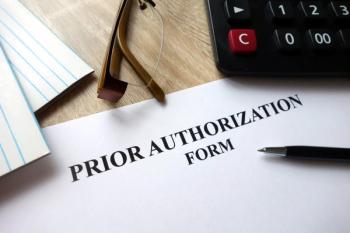
Five Ways PAs Can Help Improve EHR Implementation
Physician assistants can help busy physician practices better cope with the frustrations of EHR. Here's how.
Although EHRs are almost universal today, many employers and physicians are not satisfied with their current implementation as they are often cumbersome, inflexible, and difficult to use.
If your practice is still struggling through the implementation process, I suggest that you consider hiring or assigning a tech-savvy PA to lead the project.
Why a PA? First, as the only other providers educated in the medical model, we are taught to think like physicians think. A certified PA can be an effective proxy for the physician in the EHR implementation process. Second, the PA profession is technologically-savvy and young; the median age of certified PAs is 38. Using an electronic template to capture patient information, assessment and the treatment plan comes naturally to us.
I began my career as a certified physician assistant (PA-C) eight years ago with a private orthopaedic surgery group whose office was mostly paper based. Because I had an education in and interest in technology, I was involved in the practice's EHR planning. I have since worked with three different EHR systems, and based on that experience, I offer three facts:
• EHRs are a critical part of our job. We all have to find a way to make them work well.
• "Meaningful use" translates into dollars toward practice profitability.
• No patient encounter is complete without the provider's note.
Here are ways certified PAs can help improve EHR acceptance and success.
1. Develop work flows.
Physicians are often too busy with the big picture of running a business and don't always have intimate knowledge of work flows between providers, nurses, medical assistants, radiology, labs, and other specialists and resources. A PA can be the ideal candidate to identify employee responsibilities, work flows, and processes. Data integrity comes from gathering the right information and validating it upon input. From a provider perspective, a note is a note, but the order and formatting of workflow has to be standardized in ways not required by our old paper-based systems.
2. Create standardized templates.
Comprehensive SOAP notes (Subjective, Objective, Assessment, and Plan) - available to other providers and often to patients through a portal - reduce duplication and errors. To avoid SOAP note slowdown, create as many templates as possible. So when someone comes in with a cough, for example, data collection is fast and easy.
3. Make room for technology.
Some employees may feel the squeeze as EHRs require physical space. I was in an office where two PAs shared a desk, but we had to give that up to make room for new equipment including servers and scanners to support the system. In addition, good ventilation is required as an overheated server can shut your system down.
4. Understand "meaningful use."
A designated PA can be the "meaningful use" expert and present to all providers in your office what is necessary to meet meaningful use standards. This includes a complete list of core and menu objectives and all the data points (e-prescribing, radiology orders, labs etc.) that must be entered into the EHR for you to exceed meaningful use performance metrics. Because meaningful use requires that you enter this data a high percentage of the time, it is essential that all providers realize that doing so pays incentives. In private practice you need to capture every dollar to sustain profitability.
5. Train staff through both group and individual sessions.
PAs can support staff training. Key people need to be trained in depth as super users on the whole system so they can troubleshoot simple problems. It also makes sense to train those in like jobs together because people ask questions in different ways and learn from each other. Individual training may be required by some.
Of course, the initial implementation is just the beginning. As a super user, I am often the first line of support for EHR questions and issues in our practice, but my primary job is as healthcare provider. Because systems evolve and new releases are available, it is important to have a support contract that includes upgrades and additional training to support the ongoing effectiveness of the system.
Each of us wants to make every patient encounter a successful one; with effective implementation and integration, your EHR system can contribute to that success.
Adam Riso, PA-C, has worked in orthopaedic surgery and neurosurgery since he graduated from Quinnipiac University's PA Program. His undergraduate degree is in computer science, and he embraces the intersection of healthcare and technology. He can be contacted at
This blog was provided in partnership with the National Commission on Certification of Physician Assistants.
Newsletter
Optimize your practice with the Physicians Practice newsletter, offering management pearls, leadership tips, and business strategies tailored for practice administrators and physicians of any specialty.












